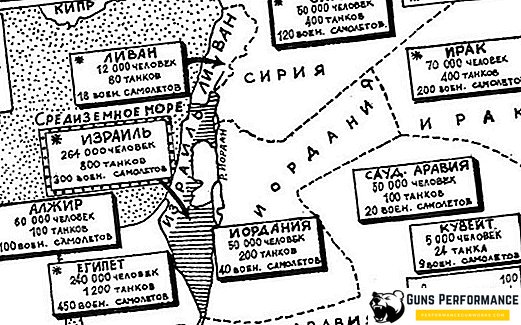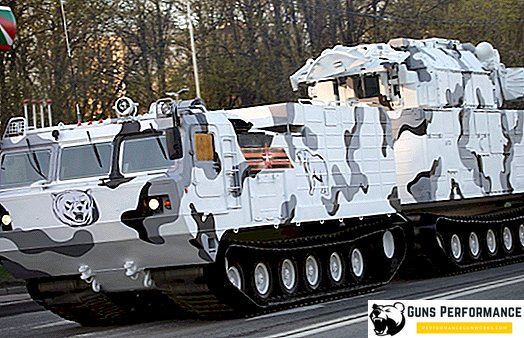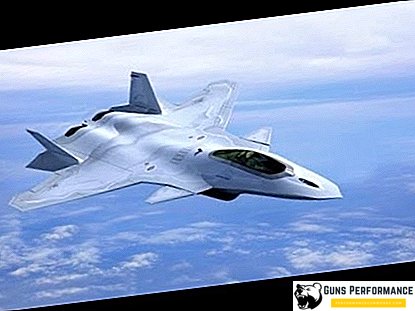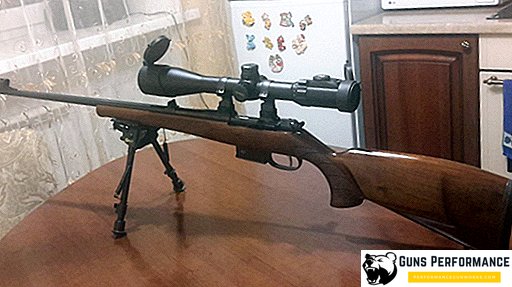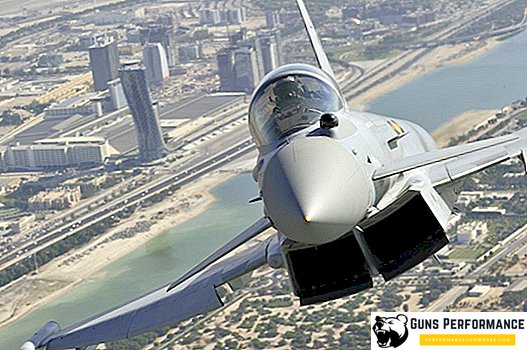
In modern warfare, aviation plays a key role. Leading military powers, worlds have a developed aviation industry and are able to independently create combat aircraft. Today, there are a number of states (India, Turkey, Iran) seeking to "the highest military-political league", they all pay great attention to the aviation industry and are striving to get the latest technology in this area by any means. The ability to build combat aircraft is not only a matter of prestige, but also of national security.
In the early 80s of the last century, the European Fighter Park was no longer consistent with the realities of the time. Machines created in the 60s (first and second generation), looked obviously outdated, both morally and physically. At the same time, the United States has already begun mass production of an excellent fourth-generation F-16 multi-role fighter, while in the USSR they worked on the MiG-29 and Su-27. The Americans aggressively offered F-16 European allies, but for England, France and Germany it was shameful not to have their own modern fighter.
In addition to ambition, the unwillingness to lose jobs in such an important area as aircraft construction, and the European requirements for the fourth-generation fighter, were somewhat different from the US ones. Therefore, at about the same time, work began in different European countries on the creation of a new combat aircraft. Later they decided to join forces, which led to the emergence of the EFA consortium, which initially included leading aircraft manufacturers from England, Germany, France, Italy and Spain.
The result of his work was the fourth-generation European fighter Eurofighter Typhoon or EF2000. Its mass production began in 2003. Today, this machine is in service with the Air Force of England, Germany, Italy, Spain, Saudi Arabia and Austria. It is planned to deliver this aircraft to Kuwait and Oman, India is showing great interest in the EF2000.
Eurofighter Typhoon is available in four different versions, one for each country participating in the project.
Domestic and foreign experts believe that at the present moment Eurofighter Typhoon is one of the best fighters in the world. The latest modifications of the EF2000 can be attributed to the 4+ generation or even 4 ++. At the beginning of this year, 476 aircraft were produced, the cost of one machine is $ 123 million.
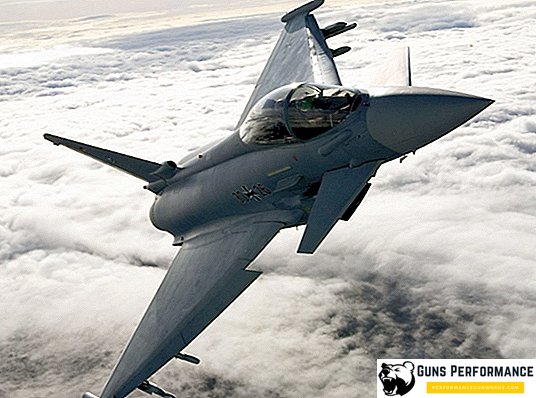
History of creation
As mentioned above, in the early 80s, Europe had a serious backlog from the United States and the USSR as its fighters. The aircraft made in the USA were not too suitable for Europeans in their characteristics: they needed a fighter capable of fighting for air supremacy and solving air defense tasks. American cars were mainly focused on solving shock tasks and could not carry medium-range air-to-air missiles.
Several European companies were engaged in the development of the new fighter: Boe in England, MVB and Dornier in Germany and Dassault-Breguet in France. The projects they were working on had similar characteristics: a simple and cheap car was created, with a relatively small take-off weight and good thrust-weight ratio. Therefore, it is not surprising that very soon the Europeans decided to unite their efforts.
In 1983, at a meeting of the chiefs of staff of the Air Forces of France, Germany, Britain, Italy and Spain, it was decided to create a consortium of Eurofighter, which would be engaged in the development of a new European fighter.
This aircraft was primarily planned as an interceptor, with missile and cannon weapons on board, capable of striking ground targets.
It should be said that at the stage of the formation of the tactical and technical tasks for the future fighter between the participating countries of the consortium serious differences arose. The French needed a plane not only land, but also deck-based, so they insisted on reducing the weight of the glider, which did not suit the other participants. For this reason, France left the consortium in 1985 and began developing its own Rafale program.
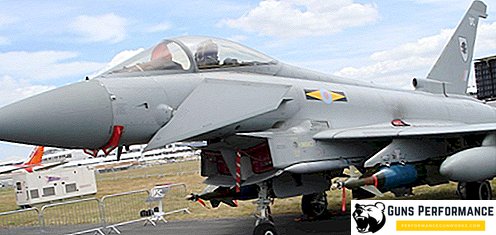
Evroistrebitelyu needed a new engine with high thrust-to-weight ratio. For its development, another consortium was created, which was named EuroJet, and it included such industrial giants of the Old World as Rolls-Royce, FiatAvio and MTU Aero Engines. The project of the new engine for the fighter received the name EJ200.
As work progressed, small European states began to show interest in them: Holland, Denmark, Norway, Belgium.
In 1988, a contract was signed for the design of the aircraft and the construction of its first samples.
The end of the Cold War and the collapse of the Soviet Union could not but reflect on the project to create a new aircraft. The threat of a global war with a strong adversary that has hung over Europe for almost half a century is a thing of the past. Voices began to be heard that the program (quite expensive, by the way) should be curtailed. In addition, many experts have said that the new aircraft is seriously inferior to the much cheaper Soviet MiG-29.
However, the program was defended, however, the number of orders for the consortium was reduced. In 1991, began testing the aircraft, and in 1994 - Eurofighter Typhoon made its first flight.
Initially they planned to build 620 Eurofighter Typhoon, orders were unevenly distributed between the factories of four countries: England - 232 fighters, Germany - 180 units, Italy received 121 aircraft. Spain entrusted the assembly of 87 machines.
In 1998, a contract was signed for the production of a pilot batch of an aircraft, and in 2000, the fighter’s flight tests were completed and it was approved for operation.
In 2002, the consortium signed a contract with the Government of Austria for the supply of eighteen aircraft, but then their number was reduced to fifteen.
In 2003, deliveries began to all the member countries of the consortium of fighters EF2000 Tranche 1. In the spring of the following year, the aircraft were officially put into service. In the same year, contracts were signed for the supply of a second batch (tranche) of aircraft. It should be noted that the fighters belonging to the Tranche 1 and Tranche 2 have significant differences. On the EF2000 Tranche 2 installed a new on-board computer, an improved avionics package, a more advanced weapon system, allowing to destroy ground targets.
The need to create a multi-purpose aircraft was particularly acute after the start of the Afghan campaign.
Eurofighter Typhoon modification Tranche 2 first took to the air in 2008. Currently, there is already a modification of the Tranche 3, which is characterized by an increased engine load, fuel tanks, a more advanced on-board computer, as well as a phased-array radar.
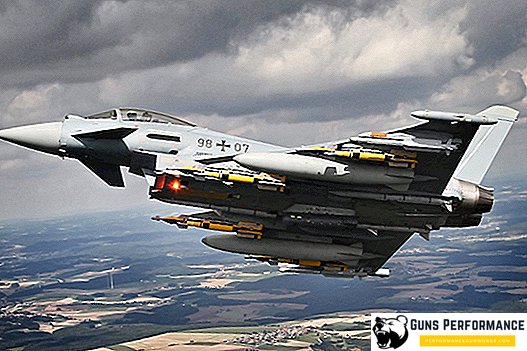
Aircraft description
Eurofighter Typhoon is a multipurpose fighter that should become the basis of the European Air Force in the first third of the XXI century.
The fighter is made according to the aerodynamic "duck" scheme, the front horizontal tail - all-turning. The wing is triangular in shape, low-lying, the sweep angle of the leading edge is 53 degrees. To reduce the visibility of the fighter, it is made of radio absorbing material.
Flaps and slats - two-section. Eurofighter Typhoon has a single-fin vertical plumage.
Fuselage type - semi-monocoque. The pilot is protected by invoice armor from small arms fire. The cockpit is closed with a single-molded frameless lantern, which provides the pilot with an excellent overview. An ejection seat is installed in the cockpit, which allows the pilot to leave the aircraft at all speeds and flight conditions.
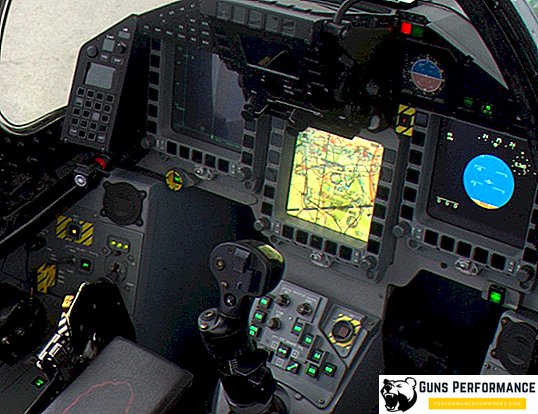
The EF2000 case is 40% carbon-fiber, 40% from various aluminum alloys, and 12% from titanium alloys. Composite materials make up most of the surface of the aircraft (about 70%), which ensures its low ESR.
The fuel tanks are located in the fuselage and in the caissons of the wing consoles. At the nodes of the external suspension can be placed several hanging tanks. There is a system of refueling in the air.
Eurofighter Typhoon has a tricycle chassis with one-wheeled racks. The main pillars are retracted towards the fuselage, and the front pillar is forward. The chassis design allows the EF2000 to land and take off from the runways with a low coverage quality. For emergency braking, the aircraft is equipped with a drag parachute.
When you create a fighter EF2000 technology is used "stealth". The plane can not be called completely invisible, but the EPR is significantly reduced. During the development of the aircraft, the designers were tasked with reducing the level of EPR compared to the Tornado aircraft by four times.
To achieve these characteristics, composite materials were actively used in the design of the aircraft, the front parts of the engines are masked by a special design of air intakes, and the external arms of the weapon are made half-indented. Starting in 2018, the Eurofighter Typhoon is equipped with an onboard radar made on the basis of a phased array, which has a much lower level of radio emission.
The power plant Eurofighter Typhoon consists of two Eurojet EJ 200 turbofans, each of which develops traction at 9.18 ton. In the manufacture of the EJ 200, the most modern technologies are used: disks made of powder materials, a digital control system capable of operating in any mode, single-crystal turbine blades, and an integrated diagnostic system. The combustion chamber has a special ceramic coating, which significantly increases its service life. One of the main features of the aircraft's engines is their modular design, it takes only 45 minutes to dismantle.
Eurofighter can be called one of the most durable combat aircraft. First of all it concerns its engine, the designers brought its resource to 10 thousand hours of work.
Unregulated air intake EF2000 is located under the fuselage, it has a curved bottom edge, which also reduces the visibility of the aircraft on the radar screens. The air intake is divided by a vertical partition into two independent channels, each of which feeds one of the engines.
Eurofighter Typhoon is equipped with a remote electronic flight control system (EMF) without a backup mechanical connection. In many ways, it provides the high maneuverability of the aircraft, its stability and the safety of piloting in the limiting modes.
The armament control system consists of an infrared front view system PIRATE and a multi-mode coherent pulse-Doppler radar ECR90. The PIRATE system is installed on the external suspension assembly and is intended for searching and defining air and ground targets.
The fighter's navigation system is inertial, it includes ring laser gyros, a helmet-sight indicator, a system for analyzing, identifying and determining the priority of external threats and other components.
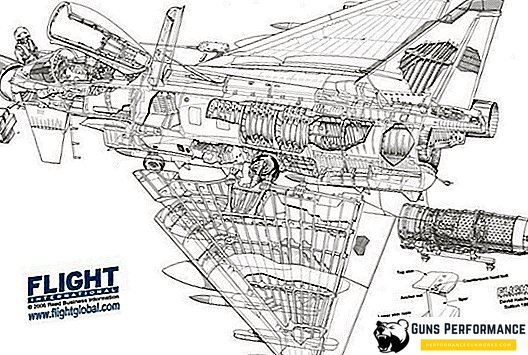
The most expensive component of the aircraft’s electronics is its DASS defense system. It collects and analyzes information from many sensors that are capable of perceiving laser or radar radiation. DASS also controls a number of protection elements (both passive and active), including interference transmitters, heat trap shooting and dipole reflectors, towed by spurious targets. The EW containers are located at the ends of the wing consoles.
The fighter has thirteen knots of external suspension. Its conventional armament consists of four medium-range guided missiles, located under the fuselage, and two short-range SDs, which are usually located at the outermost nodes of the outer suspension. In total, the Eurofighter Typhoon can carry up to ten air-to-air missiles on board. Placement of three suspended tanks is possible.
Eurofighter cannon armament consists of a 27-mm Mauser automatic cannon, it is located in the root of the right wing.
The plane can also take on board up to 6.5 thousand kg of various bombs.
Overall Project Evaluation
Estimates fighter Eurofighter Typhoon very contradictory. Aircraft manufacturers do not stint (this is natural) on the most laudable epithets in relation to their offspring. In their opinion, with a probability of 82%, the EF2000 will emerge victorious from the duel with the Russian Su-35, and its combat effectiveness equals five MiG-29 aircraft. Also, the developers believe that the Eurofighter is faster than the Su-35, F-16C, MiG-29 and the French Rafale fighter in speed of turn (M1).
However, there are other estimates of the EF2000. Several German aviation experts concluded that the European fighter was inferior to the MiG-29M, both in terms of its avionics capabilities and in flight characteristics.
It is believed that the Eurofighter Typhoon fighter is conceptually outdated before the start of its mass production. This point of view looks quite reasonable. In the United States and the USSR, work on the creation of fourth-generation fighter aircraft began in the mid-60s, and in the 80s, these machines already went into mass production. At this time, the Europeans just started to create a car.

In 1990, his first flight made the fifth generation fighter - the American F-22 Raptor. Today, this machine is commercially available, and in many ways it is superior to any aircraft of the previous generation.
Almost all the characteristics of the Eurofighter Typhoon loses to the Russian Su-35 fighter, which belongs to the 4 ++ generation. In 2014, this aircraft was put into operation and is being mass-produced.
Today, aircraft manufacturers are beginning to think about the appearance of the sixth generation fighter, although its time will not come soon.
Despite this, the European "Typhoon" is undoubtedly one of the best fighters of the day. It may be inferior in some parameters to the newest Russian and American cars, but still the Eurofighter Typhoon is a very formidable opponent.
On this aircraft, the EDSU system was used for the first time, the rational use of stealth technology significantly reduced its radar visibility, but did not make it excessively expensive, the Eurofighter Typhoon has a supersonic cruising speed, which brings it closer to fifth generation machines.
All this indicates a very high level of European aircraft manufacturing. If someday the Europeans decide to build a fifth-generation fighter, their competitors (the USA, Russia and China) will have a hard time.
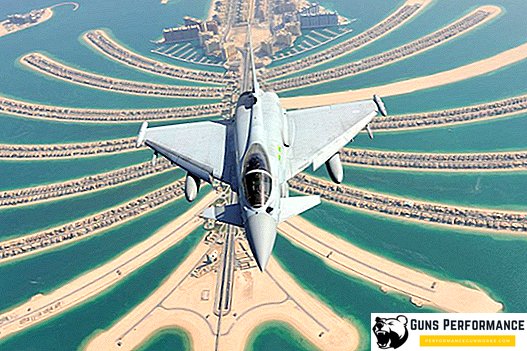
Flight performance
| Weight, kg | |
| empty aircraft | 11000 |
| maximum take-off weight | 23500 |
| engine's type | 2 TRDF Eurojet EJ 200 |
| Maximum speed, km / h | |
| at an altitude of 11000 m | 2120 (M = 2.0) |
| on the ground | 1390 (M = 1.2) |
| Minimum speed, km / h | 203 |
| Fighting radius, km | |
| in fighter mode | 1390 |
| in strike aircraft mode | 601 |
| Practical ceiling, m | 19812 |
| Crew | 1 |
| Armament: | 27 mm Mauser BK27 gun Combat load - 6500 kg (7500 kg in overload) at 13 suspension nodes |


